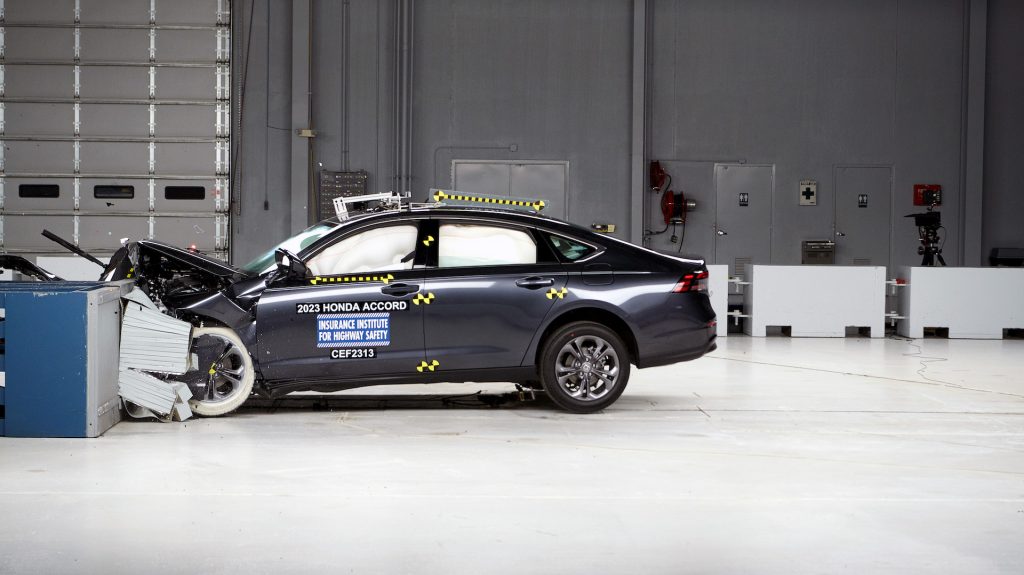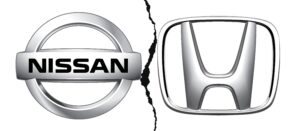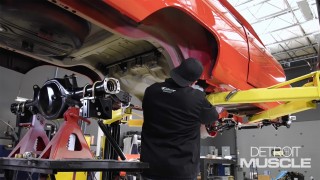And The Safest Midsize Car of 2023 is… the Honda Accord

Like anyone who is in the market for a new car, safety is always a top priority. Especially for those with small children and frequent passengers. As part of its research when analyzing the safety and potential injuries of the driver and rear-seat passengers of midsize cars, the Insurance Institute for Highway Safety (IIHS) found that the Honda Accord vastly outperformed the competition in a series of crash tests.
RELATED: RALLY RIPPER HONDA (FULL BUILD)
Using the raised safety standards of the IIHS, the Honda Accord, Subaru Outback, Nissan Altima, Toyota Camry, Hyundai Sonata, Kia K5, and Volkswagen Jetta were put through a thorough evaluation that was focused on rear-seat protection in the event of a collision. Of these seven vehicles, the Honda Accord passed with a rare “Good” rating, while the other six struggled to keep up.
Many midsize pickup trucks displayed similar results.
Trailing behind the Honda Accord was the Subaru Outback, which received an “acceptable” rating. While it received “good” ratings for both protection of the driver and rear passenger, the vehicle’s restraints & kinematics for the passenger were given a “poor” rating.
Both the Nissan Altima and Toyota Camry were rated “marginal”, and the Hyundai Sonata, Kia K5 and Volkswagen Jetta all received overall “poor” ratings.
“In most of the midsize cars we tested, the rear dummy slid forward, or ‘submarined,’ beneath the lap belt, causing it to ride up from the pelvis onto the abdomen and increasing the risk of internal injuries,” IIHS President David Harkey said in a press release. “In the three poor-rated vehicles, measurements taken from the rear dummy also indicated likely injuries to the head or neck as well as to the chest.”
What Are The New IIHS Safety Standards?
The IIHS updates its safety standards in 2022 after discovering the increased risk of fatal injuries in newer vehicles for belted occupants in the rear when there is a front-side collision. While the front seat has become increasingly safer over the years, not all automakers include the same kinds of improved airbags and seat belts in the rear as they do in the front. However, the IIHS still recommends that the rear remains the safest place for children to ride in, as they can be potentially injured by a deployed airbag from the front.
Using a dummy the size of an average 12-year-old child, IIHS researchers would assign a vehicle a “good” rating so long as there was not any excessive risk of injury to the head, neck, chest, or thigh. The dummy would also have to remain correctly positioned at the time of the crash without submarining, which is when the passenger’s torso slips underneath the seatbelt strap around the waist, causing potentially fatal injuries to the abdomen.
Why Did The Honda Accord Come In First?
As seen by the results, the Honda Accord was able to pass the test with flying colors, providing good protection to both the driver and the rear passenger. Data measurements taken from the rear dummy showed no heightened risk of injury. Restraints in the rear were also able to control the motion and position of the dummy at the time of the crash.
Unfortunately, the rear dummy had displayed signs of submarining in vehicles like the Kia K5 and Hyundai Sonata. The Volkswagen Jetta had also shown the dummy’s head come too close to the front seat’s seatback. All three of these cars had also displayed likely injuries to the head, neck, and chest, as well as additional belt forces.
The dummy in Nissan Altima and Toyota Camry had also submarined under the lap belt during the collision. The shoulder belt had also moved off the shoulder and towards the dummy’s neck.
The passenger dummy in the Subaru Outback had also submarined mid-crash, along with its head coming very close to the seatback of the driver. Following the crash, the dummy’s head had also managed to slide through the side curtain airbag and come in contact with the rear window’s door trim.









